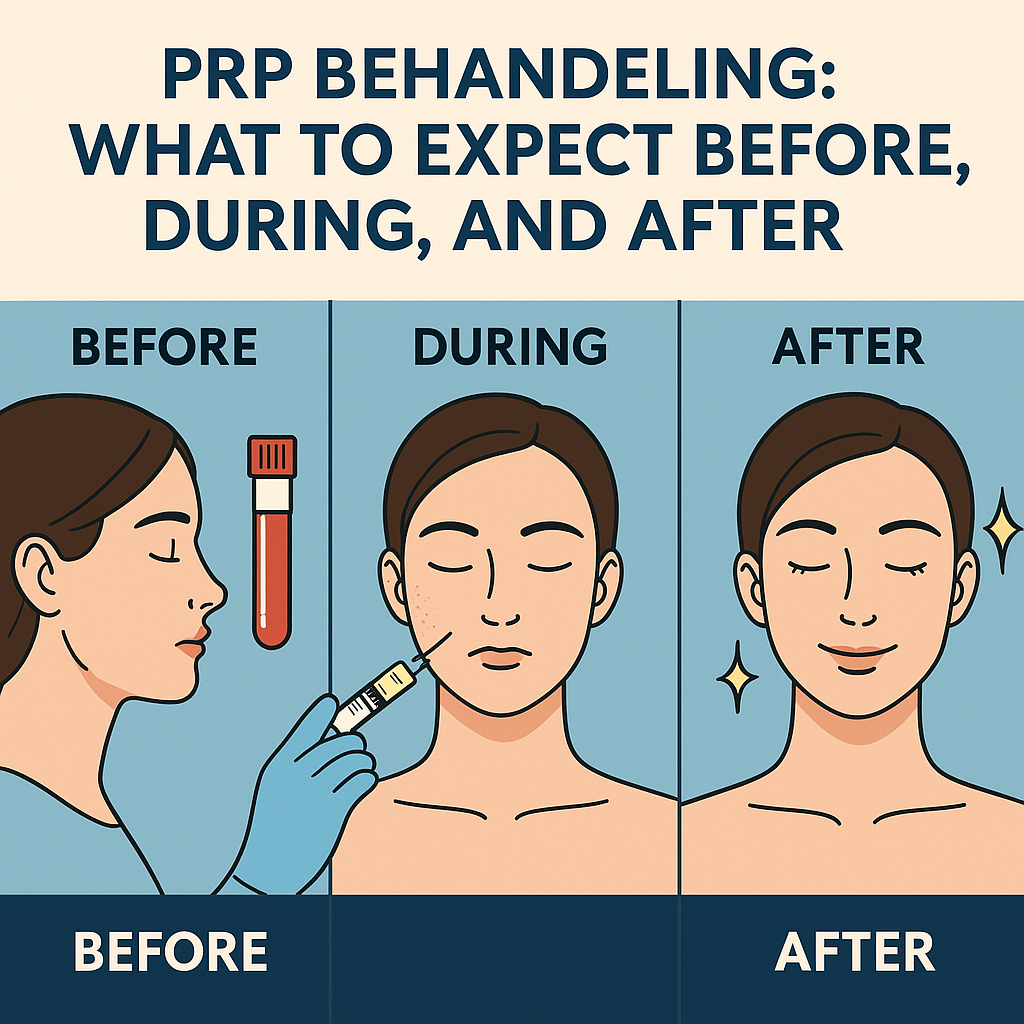PRP Behandeling: What to Expect Before, During, and After
Platelet Rich Plasma (PRP) treatment or PRP behandeling has a reputation of being natural, non-invasive and highly effective in cosmetic revitalisation. PRP, which some call the “Vampire Facial,” is on the rise in part because it harnesses your own blood to boost collagen, improve skin texture and even stimulate hair growth.
A recent study demonstrates that by encouraging the creation of collagen, decreasing wrinkles, and improving skin texture, PRP therapy dramatically improves skin rejuvenation. It backs PRP’s expanding reputation as a secure and efficient treatment in cosmetic medicine.
If you’re tempted to try PRP but confused about what the process entails from start to finish, this step-by-step guide reveals what to expect before, during and after the treatment.
PRP Treatment
In PRP treatments, a small sample of your blood is taken, processed to extract the platelet-rich plasma and then either injected or micro-needled into targeted locations of the face or scalp. PRP is an excellent resource for anti-aging, scar removal and hair growth treatment because platelets are densely packed with growth factors which stimulate collagen production and and tissue repair.
Who is Suitable for PRP?
Ideal candidates who are suitable for PRP therapy include:
- Those experiencing early signs of aging
- Individuals with acne scars or uneven skin tone
- Patients with early-stage hair thinning
- People seeking a natural alternative to fillers or botox
It is important to keep in mind that PRP is not ideal for:
- People with clotting disorders, chronic liver disease, or active infections
- Pregnant or breastfeeding women
- Those undergoing chemotherapy or taking blood thinners
Before the Treatment: How to Prepare
1. Consultation Comes First
First and foremost, you’ll have a consultation. After assessing your skin type and consulting with you about your goals, a trained skincare professional will decide whether PRP is right for you. Consultation entails procedures such as:
- Assessing your medical history
- Examining your skin or scalp condition
- Determining if you’re a good candidate for PRP
- Discussing your expectations and goals
2. Pre-Treatment Instructions
To maximize the effectiveness of your PRP session and minimize side effects, your provider will likely advise:
Drink Plenty of Water and Maintain Clean Skin: In the days leading up to your visit, make sure you drink plenty of water and arrive with a face free of makeup.
Avoid Sun Exposure: Steer clear of direct sunlight as much as possible prior to your treatment to prevent heightened sensitivity.
Avoid smoking and drinking: These activities can lower platelet quality.
No NSAIDs: A few days prior to therapy, avoid taking NSAIDs (such as ibuprofen) as they may impede the healing process.
Put Skincare Products on Hold: Three to five days before your session, stop using any products that irritate your skin. This includes vitamin C serums, retinoid, exfoliants, and any other product that contains AHAs or BHAs.
Avoid using harsh skin care products: Steer clear of lasers, retinoids, and chemical peels at least one week beforehand.
Eat a healthy meal before your session to avoid dizziness.
During the Treatment: What Happens in the Clinic
Depending on the area being treated, the actual PRP process usually takes 30 to 60 minutes and is simple and quick.
1. Blood Draw
Similar to a standard blood test, a tiny volume of your blood—typically 10–15 ml—is drawn from your arm.
2. Centrifugation
This process includes extracting the platelet-rich plasma from red blood cells and other constituents, the blood sample is centrifuged. This procedure takes around 10–15 minutes.
3. Application or Injection
Depending on the purpose of your treatment, the PRP is applied in one of two ways:
- PRP Facial (Microneedling): PRP can thoroughly enter the skin and aid in collagen regeneration by causing tiny punctures. Often referred to as a “Vampire Facial,” this is perfect for fine lines, acne scars, and skin renewal.
- PRP Injections: Using a tiny needle, the plasma is injected directly into the skin or scalp to treat hair loss or specific anti-aging.
4. Pain and Discomfort
The majority of patients characterize the feeling as mild discomfort, akin to sunburn or mild stinging. To lessen pain, a topical numbing cream is typically put on beforehand. There is also no need for sedation or anesthesia.
After the Treatment: Healing, Results & Aftercare
1. Immediate Post-Treatment Reactions
Right after PRP, it’s normal to experience:
- Redness or flushed skin (especially with microneedling)
- Mild swelling or sensitivity
- Tiny bruises at injection sites
These effects typically fade within 24–72 hours.
2. Post-Treatment Care
Your practitioner will give you detailed aftercare instructions, which may include:
- To avoid infection, stay away from cosmetics for at least 24 hours.
- Take a 24- to 48-hour break from activity and the sun.
- For a few hours, avoid washing or touching the treated area.
- For at least two to three days, use a mild cleanser and refrain from using harsh skincare products.
- If recommended, apply a healing ointment or soothing serum.
How Many Sessions Needed?
PRP is not a one-time miracle fix, you have to take regular sessions for best results:
- Skin rejuvenation: 3–4 sessions spaced 4 weeks apart.
- Hair restoration: 3–6 sessions spaced 4–6 weeks apart, with maintenance every 6–12 months.
Your provider will tailor the treatment plan based on your individual needs.
Benefits of PRP in Aesthetic Treatments
- Natural approach: Uses your own blood—no foreign substances
- Safe and low risk: Minimal chance of allergic reactions
- Multi-functional: Treats wrinkles, scars, pores, and hair thinning
- Collagen booster: Encourages long-term skin strengthening
- Minimal downtime: Return to daily life quickly
Bottom Line
PRP behandeling is a safe, natural cosmetic treatment with impressive results for rejuvenating the skin and hair, without the risks or downtime associated with other cosmetic procedures. By learning more about what you will go through beforehand and what will follow, you can make better choices and plan easily for an effective process.
Whether you’re fighting signs of aging, rejuvenating your skin or reversing early hair loss, PRP could be the game-changing ingredient your beauty routine needs.



